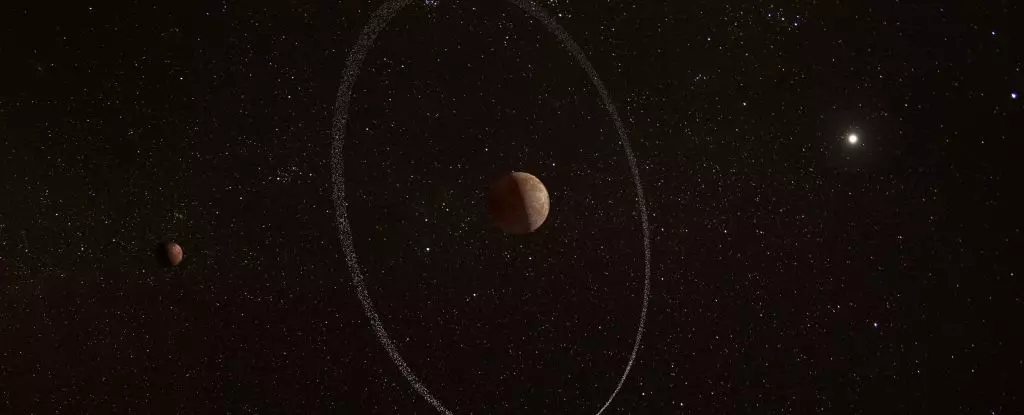In the vast expanse of the Solar System, there is a myriad of strange and unique moons that orbit different planets. Some moons are hot, some are cold, some have liquid surfaces, and others are covered in dust. Interestingly, there are even moons shaped like walnuts and potatoes. However, among the nearly 300 moons discovered so far, not a single one has been found to have rings. This absence of ringed moons is quite bizarre considering that half of the planets in the Solar System have rings of dust and ice encircling them. Even some dwarf planets and asteroids boast rings of their own.
Astrophysicist Mario Sucerquia and his team at the Adolfo Ibáñez University in Chile set out to unravel the mystery of why moons in our Solar System lack rings. They were inspired by the existence of ringed moons, or “cronomoons,” outside of our Solar System and questioned why our own moons do not exhibit similar phenomena. Despite not yet having detected any exomoon with rings, the researchers decided to delve into simulations to investigate the potential reasons behind the absence of moon rings in our Solar System.
The researchers utilized N-body simulations to explore the dynamics of moon rings in our Solar System. They considered factors such as the gravitational influence of moons, host planets, and other celestial bodies. While some moons in our Solar System possess the raw materials necessary for ring formation, the team discovered that the gravitational environment surrounding these moons prevents the stabilization of rings. For instance, material ejected by Enceladus, a moon of Saturn, is transferred to the planet’s orbit due to interactions with neighboring moons, ultimately feeding Saturn’s E ring.
Surprisingly, the simulations revealed that moon rings could be stable in certain cases, even in environments with multiple moons and planets causing gravitational disturbances. These findings were unexpected and challenged the researchers’ initial assumptions. Moreover, features observed on certain Solar System moons indicated the past existence of rings. Debris orbiting Saturn’s moon Rhea and the equatorial ridge on Saturn’s moon Iapetus provided clues to ancient ring systems that may have once encircled these moons.
The researchers postulated that radiation pressure from the Sun, magnetic fields, internal heating, and magnetospheric plasma played significant roles in the disappearance of moon rings in our Solar System. They suggested that we may have simply missed observing moon rings due to being in the wrong place at the wrong time. Sucerquia expressed his belief that moon rings likely existed in the past but have since vanished. He emphasized the importance of conducting further simulations incorporating additional parameters to gain a deeper understanding of the absence of moon rings.
While the mystery of moon rings in our Solar System remains unsolved, Sucerquia and his colleagues are expanding their research to explore the possibility of ringed moons around exoplanets. The prospect of discovering alien worlds with moon rings raises questions about the cultural implications and mythologies that may emerge from such phenomena. As they continue their investigations, the researchers ponder the uniqueness of our own Moon and how different our stories and cultures might have been if it had rings.


Leave a Reply